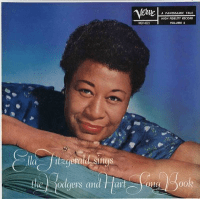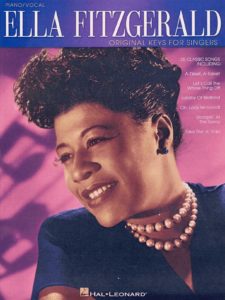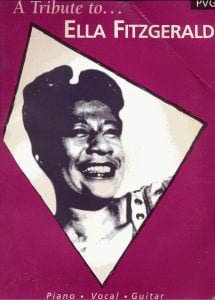Table of Contents
Remembering Ella Fitzgerald: The First Lady of Song.
Come join us now, and enjoy playing your beloved music and browse through great scores of every level and styles!
Can’t find the songbook you’re looking for? Please, email us at: sheetmusiclibrarypdf@gmail.com We’d like to help you!
Ella Fitzgerald, often referred to as the “First Lady of Song,” was one of the most influential jazz vocalists of the 20th century. With a career spanning over six decades, she became renowned for her impeccable vocal technique, innovative scat singing, and ability to interpret songs across multiple genres, including jazz, swing, bebop, blues, and pop. Her extraordinary range, purity of tone, and improvisational brilliance set her apart as a true musical legend.
This article explores Fitzgerald’s life, musical style, harmonic and melodic innovations, influences, legacy, major works, filmography, and discography, along with links to documentaries and performances of her most famous compositions.

Best Sheet Music download from our Library.
Biography
Early Life (1917–1934)
Ella Jane Fitzgerald was born on April 25, 1917, in Newport News, Virginia. Her parents separated shortly after her birth, and she moved with her mother to Yonkers, New York. Growing up in poverty, Fitzgerald found solace in music, particularly after discovering jazz records by Louis Armstrong and Bing Crosby.
Tragedy struck when her mother died in 1932, leaving Fitzgerald in the care of her stepfather. After suffering abuse, she ran away and lived in an orphanage before eventually becoming homeless. Despite these hardships, she never abandoned her love for music.

Please, subscribe to our Library.
If you are already a subscriber, please, check our NEW SCORES’ page every month for new sheet music. THANK YOU!
Breakthrough: Amateur Night at the Apollo (1934)
In 1934, at just 17 years old, Fitzgerald entered an amateur contest at Harlem’s famed Apollo Theater. Initially planning to dance, she changed her mind at the last minute and sang “Judy” by Hoagy Carmichael. Her performance won over the audience, and she took home the $25 prize. This victory led to her discovery by bandleader Chick Webb, who hired her as the lead singer for his orchestra.
Rise to Fame with Chick Webb (1935–1939)
Fitzgerald’s first major hit with Chick Webb’s band was “A-Tisket, A-Tasket” (1938), a playful, nursery rhyme-inspired song that became a national sensation. After Webb’s death in 1939, Fitzgerald took over as bandleader until the group disbanded in 1942.
Solo Career and Verve Records (1940s–1950s)
Fitzgerald embarked on a solo career, collaborating with jazz greats like Dizzy Gillespie and Louis Armstrong. In the 1950s, she signed with Norman Granz’s Verve Records, where she recorded her iconic “Song Book” series, interpreting the works of composers like Cole Porter, George Gershwin, Duke Ellington, and Irving Berlin. These albums cemented her reputation as a masterful interpreter of the Great American Songbook.
Browse in the Library:
Or browse in the categories menus & download the Library Catalog PDF:

Later Career and Legacy (1960s–1990s)
Throughout the 1960s and beyond, Fitzgerald continued performing worldwide, earning the admiration of audiences and musicians alike. Despite health struggles in her later years, she remained active until the mid-1990s. She passed away on June 15, 1996, leaving behind an unparalleled musical legacy.

Musical Style and Innovations
Vocal Technique and Range
Fitzgerald possessed a three-octave vocal range, allowing her to effortlessly navigate complex melodies. Her tone was warm, clear, and expressive, with impeccable diction and phrasing.
Scat Singing and Improvisation
One of Fitzgerald’s greatest contributions to jazz was her mastery of scat singing—improvising using nonsense syllables. Inspired by Louis Armstrong, she elevated scatting to new heights, weaving intricate melodic lines with rhythmic precision.
Notable Scat Performances:
- “Flying Home” (1945) – One of the earliest and most influential scat recordings.
- “How High the Moon” (1960, live in Berlin) – A dazzling improvisation showcasing her virtuosity.
Harmonic and Melodic Sophistication
Fitzgerald had an extraordinary ear for harmony, often reinterpreting melodies with chromatic embellishments and substitutions. She could effortlessly navigate complex chord changes, making her a favorite among jazz instrumentalists.
Example of Harmonic Mastery:
- “Mack the Knife” (1960, live in Berlin) – After forgetting the lyrics, she improvised new ones on the spot while maintaining perfect pitch and swing.
Influences and Collaborations
Musical Influences
- Louis Armstrong – Inspired her scat singing and emotional delivery.
- Billie Holiday – Influenced her phrasing and storytelling.
- Dizzy Gillespie – Introduced her to bebop, expanding her improvisational skills.
Notable Collaborations
- Louis Armstrong – Recorded beloved duets like “Summertime” and “Cheek to Cheek.”
- Duke Ellington – Performed together in concerts and recorded the album “Ella at Duke’s Place.”
- Count Basie – Collaborated on swing-driven albums like “Ella and Basie!”
Legacy and Impact
Ella Fitzgerald’s influence extends far beyond jazz. She broke racial barriers, becoming one of the first Black women to win a Grammy Award (1958) and later receiving 14 Grammys in total. Her interpretations of the Great American Songbook remain definitive versions.
Awards and Honors
- Kennedy Center Honors (1979)
- National Medal of Arts (1987)
- Presidential Medal of Freedom (1992)
Major Works and Discography
Iconic Albums
- “Ella Fitzgerald Sings the Cole Porter Song Book” (1956)
- “Ella and Louis” (with Louis Armstrong, 1956)
- “Ella in Berlin: Mack the Knife” (1960, Grammy-winning live album)
- “Clap Hands, Here Comes Charlie!” (1961)
- “Ella Fitzgerald Sings the Duke Ellington Song Book” (1957)
Essential Songs
- “A-Tisket, A-Tasket” (1938)
- “Dream a Little Dream of Me” (with Louis Armstrong, 1950)
- “Summertime” (Porgy and Bess, 1957)
- “It Don’t Mean a Thing (If It Ain’t Got That Swing)”
- “Cheek to Cheek” (with Louis Armstrong)
Filmography and Television Appearances
Though primarily a recording artist, Fitzgerald appeared in films and TV shows, including:
- “Pete Kelly’s Blues” (1955) – Played a jazz singer.
- “Let No Man Write My Epitaph” (1960) – Performed in a dramatic role.
- Numerous TV appearances on The Ed Sullivan Show, The Tonight Show, and The Dean Martin Show.
Documentaries and Video Performances
Documentaries
- “Ella Fitzgerald: Something to Live For” (1999) – A PBS documentary exploring her life and career.
- “Ella Fitzgerald: Just One of Those Things” (2019) – A comprehensive look at her impact on music.
- Watch on Bilibili (in English)
Legendary Performances (YouTube Links)
- “How High the Moon” (1960, Berlin) – Watch Here
- “Mack the Knife” (Live in Berlin, 1960) – Watch Here
- “Summertime” (with Louis Armstrong) – Watch Here
Ella Fitzgerald’s voice was a force of nature—pure, agile, and endlessly creative. From her early days with Chick Webb to her reign as the queen of jazz, she redefined vocal artistry. Her recordings remain essential listening for musicians and fans alike, ensuring that the “First Lady of Song” will never be forgotten.
Whether through her groundbreaking scat solos, heartfelt ballads, or swinging big-band numbers, Ella Fitzgerald’s music continues to inspire generations. As she once said:

“Just don’t give up trying to do what you really want to do.”
And she never did.

